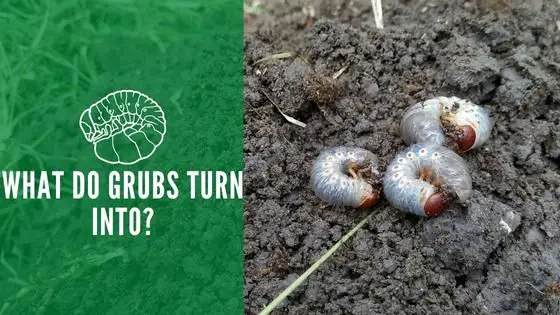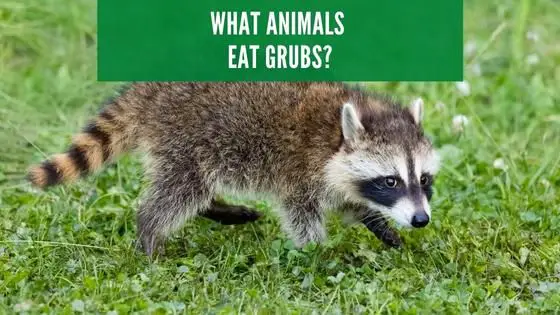What Do Grubs Turn Into?

Finding a grub worm is much like finding an alien life form in the landscaping. These odd-looking insects are typically found curled up into a c-shape and have white bodies with brown heads. Unlike earthworms, grubs have six legs, making them an insect. Knowing what grubs turn into helps you to know why it is important to control them on your property.
What Are Grubs?
Grubs might get mistaken for worms based on their size and wriggly bodies, making them seem fully grown. However, grubs are larvae that will eventually turn into some type of beetle. Insect larvae have already hatched from an egg but require further development to become their final adult form.
During the larval state, grubs spend most of their time feeding as they prepare to become pupa and eventually live out the rest of their lives as beetle. Grubs might turn into Japanese, green June, Asian Garden, or Oriental beetles. A grub you find in your lawn might also become a chafer once they grow up.
How Does the Grub Life Cycle Work?
Grubs begin their life as eggs that an adult lays several inches down in the soil. Typically, adult beetles lay their eggs between June and July, and it takes about two weeks for the grubs to hatch.
After they hatch, grubs immediately begin feeding on the roots of plants, which are usually attached to the grass in the lawn. They’ll feed for two to three weeks before molting, and each molt is called an instar. Grubs usually go through three instars before they are ready to begin their metamorphosis into a beetle.
After grubs complete their final instar, they feed for a short period and pupate. They exist within the pupa state for one to three weeks before finally becoming a beetle. Adults spend the next period of their life cycle feeding, mating, and laying eggs until they eventually die.
A grub’s life cycle usually runs for a year, from being an egg to reaching its final adult form.
Are Grubs and Beetles Dangerous?
Grubs and beetles won’t hurt you, your children, or your pets, but they can wreak havoc on your lawn. Grubs spend large amounts of their time feeding on the roots of plants, which can cause them to weaken and be unable to support growth.
A healthy lawn can usually support having a few grubs in the ground going through the feeding process, but large populations of grubs can lead to the grass and other plants dying in your landscaping. You can check for grubs by digging through the first three inches of soil and turning it over. If you see these c-shaped bugs, you know you’ve found beetle larvae.
In their adult state, beetles can also significantly damage lawns as they eat plant life to support their bodies through their reproductive cycle. Other than lawn damage, people tend to view beetles as more of a general nuisance.
If you’ve ever come across a swarm of June bugs, you know how irritating it can be to have them find their way into your house or spend their time banging against glass windows and doors.
Are Grubs Good for Anything?
You might occasionally hear someone tell you to leave grubs alone because they play a vital role in the ecosystem. While it is true that they help soil health by eating organic matter and returning nutrients to the ground, this one minor benefit doesn’t outweigh the harm that they can do.
Adult beetles are known for feeding on garden plants, and any soil enhancing the grubs do, is cancelled out by the damage that occurs to the produce you are trying to grow.
Do Grubs Have Natural Predators?

The other benefit of grubs is that they can serve as a natural food source for predators. However, this could also generate problems on your property. Moles, skunks, and raccoons all enjoy eating grubs, but they can also be nuisance pests if they start to turn up your lawn while searching for food. These animals can also carry diseases, such as rabies, which is a good reason to avoid attracting them to your property.
Birds will also eat grubs. They tend to look for ones on the ground’s surface, so they usually do less damage. But, they can still leave potentially disease-harboring droppings behind for you to clean up.
What Are Signs of Grubs In Your Lawn?
Since grubs spend most of their life underground, an infestation can be hard to detect until it reaches a significant level. You can always do a soil check every season by turning the grass over to look for grubs.
You’ll also want to watch for other signs of grub activity that are apparent in the health of your lawn. Grubs feeding on the roots of the grass leads to yellowing since the plants will no longer be able to get enough nutrients and water from the soil.
If you tug on the grass with grub damage, it will often roll up like a piece of carpet with little effort. Before the grass reaches that point, you might notice brown patches around your lawn that look like it is stressed from the heat or lack of rain.
If additional watering doesn’t turn the patches green, you might be dealing with grubs eating up the lawn.
You should also take a moment to look for increased pests during the summer and fall seasons. Adult beetles and moths that move close to the ground level might be there to lay their eggs—having eggs laid now can result in a bigger problem next spring and summer.
Should You Get Rid of Grubs and How?
If you turn over the average-sized yard, you will likely find a few grubs here and there simply because these insects are so common. A single grub or two might not cause much lawn damage, but you must address larger grub infestations.
Leaving a grub problem alone can result in significant lawn die-off, and you could later face a substantial beetle issue that impacts the other plants on your property. Gardeners need to be wary of allowing grubs to remain in the soil.
Getting rid of grubs is easier to handle when you plan for seasonal spraying. Preventative insecticides focus on killing off the emerging grubs as they hatch from their eggs and start to feed on the roots of plants. Curative insecticides address larger grubs and their adult beetles.
A pest control service will let you know where you are at in the life cycle of the grubs so that they can use the right spraying method. Severe infestations may require spraying during the prime egg laying season and again once the larvae emerge to stop an infestation from spreading at the prime stages of the life cycle.




